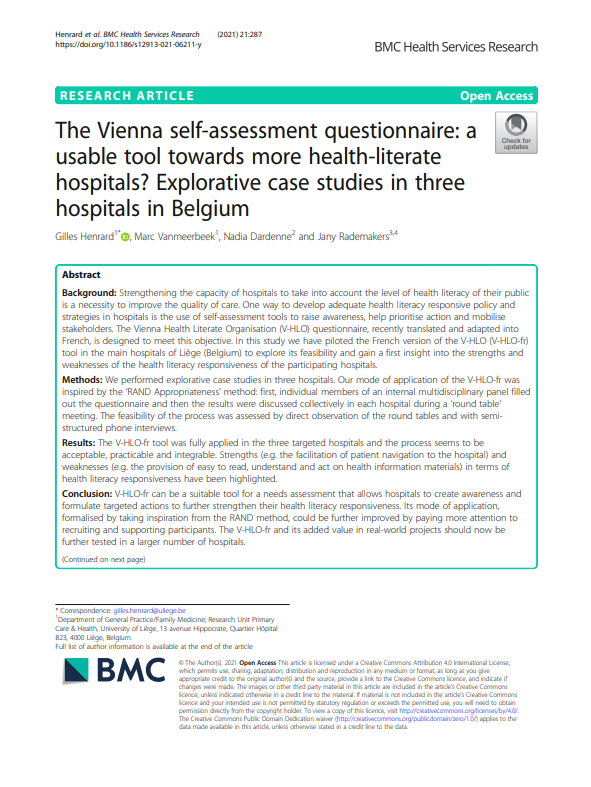Abstract
Background
Strengthening the capacity of hospitals to take into account the level of health literacy of their public is a necessity to improve the quality of care. One way to develop adequate health literacy responsive policy and strategies in hospitals is the use of self-assessment tools to raise awareness, help prioritise action and mobilise stakeholders. The Vienna Health Literate Organisation (V-HLO) questionnaire, recently translated and adapted into French, is designed to meet this objective. In this study we have piloted the French version of the V-HLO (V-HLO-fr) tool in the main hospitals of Liège (Belgium) to explore its feasibility and gain a first insight into the strengths and weaknesses of the health literacy responsiveness of the participating hospitals.
Methods
We performed explorative case studies in three hospitals. Our mode of application of the V-HLO-fr was inspired by the ‘RAND Appropriateness’ method: first, individual members of an internal multidisciplinary panel filled out the questionnaire and then the results were discussed collectively in each hospital during a ‘round table’ meeting. The feasibility of the process was assessed by direct observation of the round tables and with semi-structured phone interviews.
Results
The V-HLO-fr tool was fully applied in the three targeted hospitals and the process seems to be acceptable, practicable and integrable. Strengths (e.g. the facilitation of patient navigation to the hospital) and weaknesses (e.g. the provision of easy to read, understand and act on health information materials) in terms of health literacy responsiveness have been highlighted.
Conclusion
V-HLO-fr can be a suitable tool for a needs assessment that allows hospitals to create awareness and formulate targeted actions to further strengthen their health literacy responsiveness. Its mode of application, formalised by taking inspiration from the RAND method, could be further improved by paying more attention to recruiting and supporting participants. The V-HLO-fr and its added value in real-world projects should now be further tested in a larger number of hospitals.
